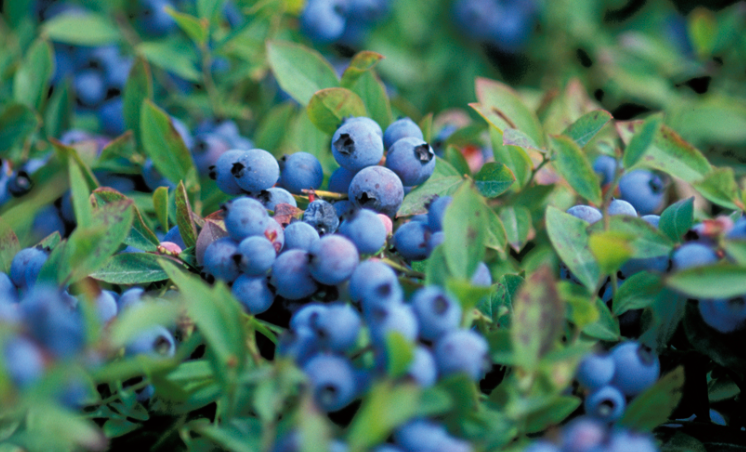Sterols & Stanols: Improving the Cholesterol Picture

You may have seen references to them on your orange juice or yogurt carton. You may know about them because you are making efforts to lower high cholesterol. They are phytosterols, otherwise know as plant sterol and stanol esters, or simply sterols and stanols. They are naturally occurring compounds found in plant cell membranes, and they come with an interesting benefit. Because phytosterols are structurally similar to the body’s cholesterol, when they are consumed, they compete with cholesterol for absorption in the digestive system. As a result, cholesterol absorption is blocked, and blood cholesterol levels are reduced.
Because of this natural process, consuming phytosterols in recommended quantities has been shown to lower total cholesterol up to 10 percent and LDL (that’s your bad cholesterol) up to 14 percent. Here is the FDA’s health on phytosterols:
“Foods containing at least 0.65 gram per serving of vegetable oil plant sterol esters, eaten twice a day with meals for a daily total intake of at least 1.3 grams, as part of a diet low in saturated fat and cholesterol, may reduce the risk of heart disease.”
A Satisfying Middle Ground?
It’s easy to understand why phytosterols are in fashion – this natural process has the potential to be very valuable for those of us trying to keep our heart healthy and our cholesterol at less than dangerous levels. And, phytosterols have the potential to offer a satisfying middle ground: a natural way to improve cholesterol that falls between just eating right and taking medication. As always, there are some things worth keeping in mind when it comes to sterols and stanols. Here’s the run-down:
- Reduction in cholesterol occurs with regular use.
- According to the American Heart Association, maximum effects are achieved at 2 grams per day – more than this does not provide more benefits.
- They simply don’t replace medications – if you are at risk, eat well and keep your meds.
- Recommendations are part of a healthy lifestyle. While polysterols can be helpful, for those at high risk, they can’t do they job all by themselves.
Polysterols, Where Are You?
Since the FDA claim, we can find them in more places then you might think. Polysterols can be found in whole foods and pill form, but you are most likely to encounter them in the supermarket, as part of a growing number of fortified food products.
First, phytosterols are naturally present in many whole foods. Vegetable oil, nuts, legumes, whole grains, and most fruits and vegetables have polysterols, but only in small quantities. The amount required to lower cholesterol is 500 mg per day, and these natural sources fall short. That’s when foods fortified with sterols and stanols take the stage. Popular fortified foods include butter spreads, some cooking oils, salad dressings and yogurts. Some juices, such as Minute Maid Heart Wise Orange Juice for example, are fortified, and milk, rice milks and soy milks can be as well.
The American Heart Association does not recommend sterol and stanol-fortified foods for everyone, suggesting instead that those who have been diagnosed with high cholesterol or have had a heart attack should use them. This seems counter to current consumer trends, however. Since we have come to understand that phytosterols can have a positive effect on a very ubiquitous health ailment, the expectation is that we’ll see many more foods in the supermarket that will include them. In effect, if you are in the market for phytosterols, you’ll be able to choose how you get them, whether it’s in a breakfast cereal, a snack bar – even in chocolate.
(In addition to fortified foods, supplements exist, but experts generally advise against them. The effects are simply unclear, and the benefits appear to be very small.)
Getting these beneficial phytosterols naturally or through fortified foods may seem to be a palatable compromise to taking cholesterol medication. But while supplementing the body with healthy foods is a good idea, it’s worth repeating that medication is necessary those who have proven to have a need. Stanols or sterols by themselves will simply not protect someone with risk factors. As always, it’s something to consult your doctor about to find out the best way to protect your ticker for the long term.
The Cleveland Clinic has more info about sterols and stanols.
Heart Help
There’s lots of information out there to help you get informed about heart health and nutition. WebMD shows us an array of foods that will make anyone happy to be eating heart healthy with
 25 Foods that Will Save Your Heart. You’ll also do well to consult the American Heart Association about guidelines and risk factors when it comes to this all important organ.
25 Foods that Will Save Your Heart. You’ll also do well to consult the American Heart Association about guidelines and risk factors when it comes to this all important organ.
Heart Health & Wild Blueberries
Eating heart healthy foods is job one for anyone concerned about heart health and cardiovascular disease. If seeking out natural ways to increase your heart’s longevity is your mission, look no further than the wild blueberry. Here’s four heartening reasons:
A blueberry-enriched diet may protect the heart muscle from damage. Due to their ability to act as both an antioxidant and anti-inflammatory agent, wild blueberries can help limit heart harm that comes from aging and lifestyle.
A diet of blueberry supplementation can provide cardiovascular support. Blueberries may support cardiovascular health through reducing plasma cholesterol levels.
Blueberries may reduce the build up of so called “bad” cholesterol. By reducing buildup of LDLs, wild blueberries contribute to reducing cardiovascular disease and stroke, thanks to their powerful antioxidants.
Wild blueberries could help regulate blood pressure and combat atherosclerosis. Studies show that they have the potential to decrease the vulnerability of heart blood vessels to oxidative stress and inflammation.
Get the skinny on heart health research and other health benefits of wild. Then, take heart at the myriad ways there are to begin caring for this precious organ that is quite literally at the center of your health.

